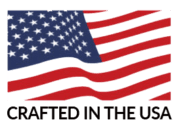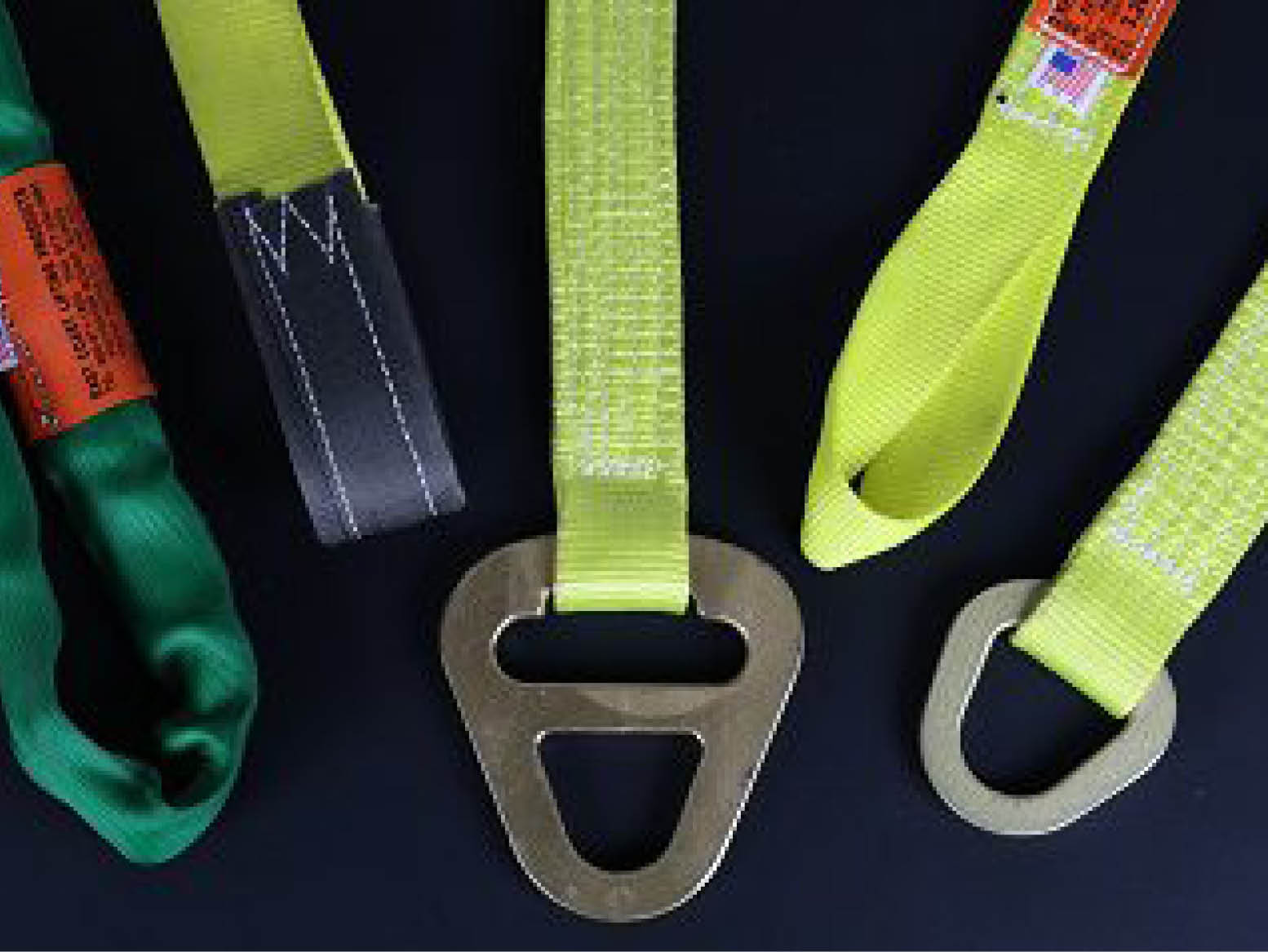Lifting and Rigging: Applications and Safety
Whether you’re craning a 50-ton industrial machine through the roof of a manufacturing plant, or simply securing an ATV in the bed of your pickup, using the correct rigging and lifting components is just as critical to ensure that everything goes smoothly, safely, and according to plan. Understanding lifting products can present a slight learning curve given how many possible options, capacities, and details are involved in rigging and hauling work. To help clear the water, we’ve prepared this article to cover the most common lifting products available, to provide insight into each items’ typical application, and to share useful safety and regulatory info that should be considered before making any purchases.
Lifting and Rigging Safety
When it comes to lifting, moving, transporting, and securing heavy objects, proper safety and regulatory compliance are critical concerns to address before any work begins. All rigging and lifting activities should meet or exceed a few standard expectations, such as:
- All work shall fully adhere to applicable OSHA, company, and industry guidelines
- All work shall be fully planned out ahead of time, and contingency plans readied for any emergency that may be encountered
- All work shall be conducted by knowledgeable and trained parties
- All equipment, gear, protective equipment, and tooling shall be in place, in use, inspected, and previously maintained in fully functional condition
- All regulatory and certification requirements shall be met and in practice throughout the course of the work
Regarding regulatory compliance in particular, all lifting hardware, components, and work practices should be fully certified and / or listed with the appropriate technical organization governing such items. Too often, non-compliant hardware finds its way onto a project, procured for its low price from foreign suppliers that may not be manufacturing their products according to domestic codes. Or, more nuanced, hardware that appears applicable but is not specifically rated for a given use might be inadvertently grabbed for a job (such as using shackles rated for the correct capacity, but for towing duty, not for lifting duty). Users must check which bodies apply to their projects, and confirm all aspects of a project comply with the requirements of these bodies. A few of the most common governing organizations are as follows:
- WSTDA – Web Sling and Tie-Down Association – a non-profit organization that issues technical design, fabrication, and use standards for web slings, tie-downs, and related lifting hardware
- ASME – American Society of Mechanical Engineers – a non-profit organization that issues testing and technical standards for hardware of all sorts, including chain, wire, mesh, synthetic fiber, synthetic webbing, and polyester fiber materials used in lifting hardware
- OSHA – Occupational Safety and Health Administration – the governmental body responsible for workplace safety code issuance and enforcement
- Wide variety of trade associations and industry groups that have detailed technical and procedural guidance available across many markets. For example, the MCAA (Mechanical Contractors Association of America) and CMAA (Crane Manufacturers Association of America), which publish safety handbooks and provide educational resources to industry.
Synthetic Slings
Synthetic slings are flat, stitched fabric belts made of either nylon or polyester material, used to lift and secure heavy loads. Slings have many options for end attachments, weight rating, color, thickness (or ply), length, and environmental ratings. Most often, slings are used to rig up large objects to lifting equipment such as a crane, as they provide a degree of protection to the object being lifted and nearby personnel (as these slings are softer and more elastic than chain slings, reducing the likelihood of a shock-induced failure).
The general design of a sling is similar to a belt or strap, though many custom configurations can be provided to meet each user’s exact needs. Common customizations include mix-match end fittings, adding edge scuff protection, and special environmental ratings such as fire-resistant or water-repellent construction.
When selecting synthetic rigging materials, be sure to check chemical, temperature, moisture, and UV compatibility details prior to purchase. While nylon and polyester materials are quite robust, certain chemicals and environmental conditions risk premature failure in these fibers. In addition, load capacities may be reduced for materials exposed to impactful conditions, namely high temperatures and normal aging.
All sling types have specific capacity ratings per their length, width, ply count, end fittings, and the hitch type used. Across the entire range, synthetic slings are typically rated between 880 lbs and 180,000 lbs, though most slings are purchased in the 30,000 to 50,000 lbs range (as most users prefer to use metallic slings above 50,000 lbs for added safety and lower flex).
 | Hardware Slings Flat straps with single or double triangle bracket ends, most commonly used for choker, vertical, or basket hitches. |
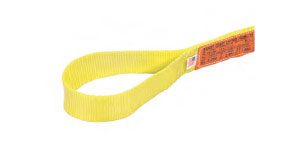 | Eye Type Slings Flat straps with double eye ends, used for choker hitches around objects or between other rigging gear. |
 | Round Slings The most flexible style of sling, with an abrasion-resistant double-wall polyester covering for longer life and easier adjustment during rigging. |
 | Endless Type Slings A universal solution, these economically-priced slings can be used for all hitch types, as well as for unique scenarios needing additional rigging restraint. |
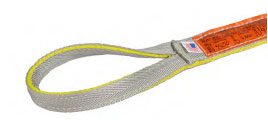 | Reverse Eye (or Twisted Eye) Slings All choker-end slings can be provided with reverse eye style ends, which provide a better choker hitch and eliminate strap binding when connected to a crane hook. |
 | Boat Slings Marine-rated, long-life slings for lifting and towing boats, made with non-abrasive materials that will not scuff hulls, and a quick-disconnect feature for easy operation. |
 | Wide Lift Slings Feature a wide loading surface that spreads the lifting force across a wider area, providing higher lifting capacities and more uniform weight distribution. |
Metallic Slings
Our next category of rigging and lifting products is that of metallic chain and cable materials. Metallic slings are available in cable and chain construction, which are selected for their higher weight capacity, longer life, slower deterioration, and marginal elongation or flex, as compared to synthetic slings.
Cable slings provide capacities up to 109 tons (218,000 lbs) in standard cable sizes, and even higher in custom sizes.
Chain slings are available up to 72,300 lbs, but are commonly used in bridle sling sets with multiple chains to achieve higher capacities. Chains are also selected for their extreme durability, long life, and great resilience when used in harsh environments.
 | Cable Slings Wire-rope cable slings offer ultra-low stretch, wide capacity range configurations, from 1/4” to 2-1/2” diameter cables (and beyond). Many hook, eye, and special end types are available. |
 | Chain Slings Offer the highest weight capacity of all slings, made of Grade 80 or 100, 7/32” to 1-1/4” chain, for corrosion resistant, harsh environment, and extended life applications. |
 | Bridle Slings Using chain or cable slings described above and a common center link ring, bridle slings provide multiple attachment points to distribute and balance out large or odd-shaped loads. Available in multiple configurations, leg quantities, and connection types. (Bridle Slings are also available using nylon or polyester web slings described in the previous section.) |
Tie-Downs and Straps
Securing loads during transportation, staging, and recovery takes specially designed equipment rated for the forces and wear expected in these applications. Synthetic tie-downs and straps offer cost-competitive solutions with excellent load capacities and low weights, being made up of the same nylon and polyester materials described in the Synthetic Sling section above.
Tie-downs and straps are typically rated for loads between 1,500 lbs and 20,000 lbs, though are usually not used for extreme weight handling due to the nature of their design. Tie-downs secure loads down to cargo decks and trailers, serving more as restraints against movement during transportation than raw lifting devices. For this reason, tie-downs and straps are typically selected as a function of the ‘force’ that they are restraining (split amongst however many straps are to be used simultaneously), known as the Working Load Limit.
A good rule of thumb is to select straps where their combined Working Load Limit (WLL) exceeds the weight of the object being secured. For example, if you’re securing a 6,000 lbs vehicle to a trailer using (4) straps, each strap should have a rating of 1/4 of the load = 6,000 lbs / 4 straps = 1,500 lbs WLL per strap.
For added safety, perform this calculation again, this time considering that if one strap fails, the remaining three straps should safely retain the vehicle’s weight. In that case = 6,000 lbs / 3 straps = 2,000 lbs WLL per strap.
For heavier loads, long-haul transportation, and other unique applications, strap selection can be more critical. For example, a large cargo piece may experience very high forces should the freight truck carrying it begin to tail-whip in bad weather at high speeds. Consult with a rigging expert or strap manufacturer for recommendations around such applications.
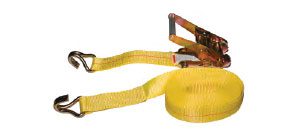 | Tie Downs For cargo and load tie-down commonly used in transportation and hauling, and available in a very wide variety of lengths, widths, end connections, ratchet styles, materials, and customer configurations. |
 | Flat Straps These straps are most commonly used with fixed anchoring points such as ratchets and winches, where only the load side needs connecting between uses. |
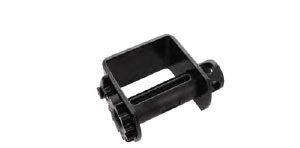 | Winches Allow for adjustable and compressible tightening of load straps, most commonly mounted to vehicles and trailers as fixed anchoring points (very common on short-route delivery vehicles). |
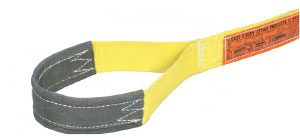 | Recovery & Tow Straps Lightweight, metal-free, easily manageable tow straps provide cushioning elongation to lessen load shock, as well as feature ultra-durable materials for superior abrasion resistance. |
Lift Hardware
Slings, straps, chains, and cables get most of the attention when discussing lifting products, but in many ways, the minor hardware components that connect these pieces together are the most important pieces of the kit. Connecting hardware is often overlooked and used interchangeably across load capacities because they all often ‘feel’ strong enough due to the nature of their construction. Likewise, hardware sees plenty of abuse with all of the connections made over time, and load capacity markings tend to wear off, making them hard to identify.
Lifting hardware should be selected by the correct load ratings required for each given task, and marked, stored, and maintained in such a way that these load ratings are always readily identifiable. A common practice used by professional rigging teams is to only purchase hardware rated at the upper 25% of the load profiles they routinely handle, which reduces the chance that an undersized hardware piece would even be present on most of their projects. In addition, many teams will paint and tag hardware pieces for easy identification. For example, while the cast-in numbers on a hook might wear off over time, painting the entire hook bright yellow can serve as a company standard color scheme denoting 25,000 lbs capacity that is both easy to see and maintain.
 | Chain Anchors These serve as end-point connections on heavy-duty tie-down applications, typically attached to tie-down ratchet bodies or as end hardware on flat synthetic straps. |
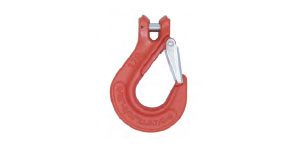 | Hooks Hook ends are available in multiple styles and provide quick-connect, interchangeable connection methods for chain, cable, strap, and rachet ends. |
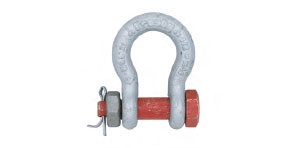 | Shackles Securely binds cable, chain, strap, and tie-down ends to each other or to rigging points for a positively engaged and protected connection. |
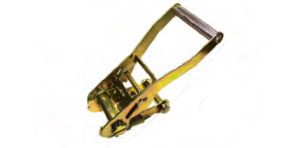 | Ratchets Used to compress tie-down straps when securing loads and cargo. Ratchet ends can be connected to strap ends on both the anchor and load side, or permanently mounted on the anchor end (such as when mounted on flat bed trailers). |

About InCord
InCord manufactures custom safety netting solutions and lifting and rigging products for a range of industries. Our woman-owned Colchester, CT manufacturing plant is an ISO-9001 certified facility, housing a team ready to design and fabricate a unique netting solution to fit your needs. InCord was founded in 1995 and is a Connecticut Top Workplace. To discuss an application, request a quote, or obtain technical guidance, please call us at (860) 537-1414, submit a request here, or email us at netting@incord.com.


